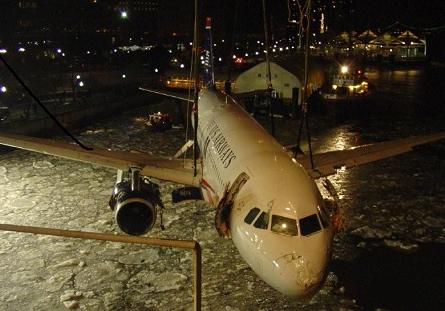The successful Hudson river ditching will give the world a chance to review the whole issue of force-landing aeroplanes on water. There is so much myth surrounding ditching, and so little assembled scientific knowledge associated with it, that the information gained in the investigation led by the US National Transportation Safety Board has the opportunity to advance aviation safety considerably.
If an aeroplane is faced with having to force-land for any reason, there is a significant chance that a body of water may represent the best - or even the only - chance of putting the aircraft down survivably. Flight over oceans obviously presents the crew with no choice, but in rugged or undulating terrain, or a built- up area like the banks of the Hudson opposite Manhattan, a body of water may be the only flat, unobstructed space available. This successful ditching by a big jet will open pilots' minds to an option they may have blocked out, but they need to know as much as possible about what the risks are and how to deal with them.
If sufficient evidence were to emerge from the inquiry, simulator manufacturers might be able to recreate a simple ditching scenario based on recovered data, providing crews with the opportunity to practise the associated preparatory drills and set-down procedure. This drill would not need to be practised every six months, nor be carried out in a full-flight simulator.
 |
|---|
Source: Flight International



















